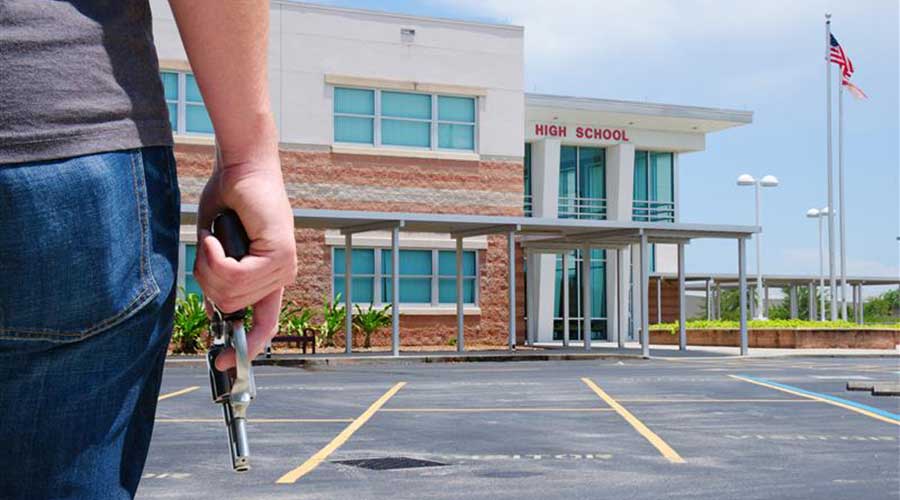Facility Professionals Use Open Procurement Process During Bidding
Even though Bibb County, Ga., is the seventh most impoverished metro area in the country, money for capital projects was not an immediate problem. In 1996, Georgia's constitution was amended to allow for a one percent sales tax, allowing local boards of education to call for an Education Special Purpose Local Option Sales Tax (ESPLOST) authorized for specific capital improvement projects for a period of at most five years. The ESPLOST can be renewed through a new referendum.
An ESPLOST in 2000 generated more than $143 million, and one in 2005 produced almost $164 million, funding 43 projects combined. The problem wasn't the money; it was that the county's capital improvement program management was not meeting community expectations. The district was contending with a history of projects falling behind schedule, or being delivered on time but without adequate transparency into the projects. In addition, the buildings were not tailored to their end users and were perceived as being "fast and cheap." And because authorization for the ESPLOST depended on voter approval, an unhappy community could easily vote "no" on the next referendum.
For the 2005 capital improvement project, a fresh project management team was brought on board with a tall order: regain community trust and deliver high-performance, durable facilities tailored to the students and teachers while cutting maintenance and operations costs.
To gain the public's trust, the new team — headed by Bob Flowers, capital improvements program administrator — set about meticulously making every step of the process transparent and accounted for. Among several distinctions, the district won a 2010 FMXcellence award for this endeavor.
Amy Watts, construction contract administrator, Bibb County, set up an Excel spreadsheet broken down by project and budgets within projects, tracking every penny that came and went, updating the values daily. It was time-intensive but any time anyone from the community or board had a question about the budget, the answer was immediately available.
The procurement process was also open for inspection. RFPs were publicly posted. The selection of contractors included review by a committee that included representatives from the schools and from the community. "It was an attempt to get a broad segment of the community involved in the process, to have buy-in into it," says Flowers.
Another step taken to secure the community's trust was pursuing LEED certification at two of the high schools as the external stamp of approval validating their efforts. LEED, however, was a new concept in 2006 in middle Georgia.
"We found that to benefit most from the LEED process, it requires integrated design in order to be successful," says Flowers. "It was a different way to do business, but it was the right way to do business to achieve the results we were looking for."
And that kind of integration and tailoring to the end user was going to take a whole lot of investigation and education on the part of Flowers' team. It would have been much faster to be able to sit down with an architect, sketch out the request and step back. "That's what had been done in the past, and it didn't work because no one had buy-in into it," Flowers says.
To develop the educational specifications that would drive the designs, Flowers' team had many discussions with the teachers, staff, students and the community about their needs. Everything from current needs to expected advances in education technology was addressed. Flowers' team even went so far as taking staff on tours of other recently built schools so they could understand the possibilities available.
"We were dealing with staff that didn't really know what was possible in their classrooms," Flowers says. Historically, Bibb County schools had constructed austere facilities, minimally designed with few amenities. "They'd never had the opportunity to think about what they needed in a classroom, so that was an awakening for them."
As Bibb is an urban school district, the community also uses the facilities and was able to share their desires.
"People would say they want to look at something pleasant, not just a big box," says Brenda Stokes, director of construction, Bibb, "We want to be able to use the facility, use the track. We want you to be mindful of the traffic and not have cars pile up down the street."
Design Change Pays
Using LEED did more than prove to the community the schools being delivered were of the highest quality. Though final confirmation of LEED Silver for the two high schools is pending, a pleasant surprise to the school board was the magnitude of savings achieved through a thoughtful, integrated construction process for the 17 projects in the 2005 CIP. Half of the schools were replacements for existing facilities. The old buildings were deconstructed and the materials reused as much as possible. Diverting more than 55,000 tons from the landfill saved more than $2 million. Choosing to go with polished concrete flooring instead of VCT cost a little more upfront, but has the potential to save more than $13 million over a 50-year life cycle in maintenance costs. And that's just the beginning.
With budgets in schools nationwide constantly getting squeezed, Flowers says, it made all the sense in the world to pursue more efficient, long-lived solutions that slash operating costs. Most of the upgrades or systems they installed in the new schools had less than a five-year payback, he says.
The other big payoff is the turnaround in community support the school system has experienced due to this integrated design process and delivery of high-performing schools. "We have been witness to a minor miracle with the view of the public in regards to facilities," says Flowers, "and it's going to support the school system for many, many years to have this kind of legacy."
More K-12 Innovations: Energy Saving Strategies

Related Topics:














